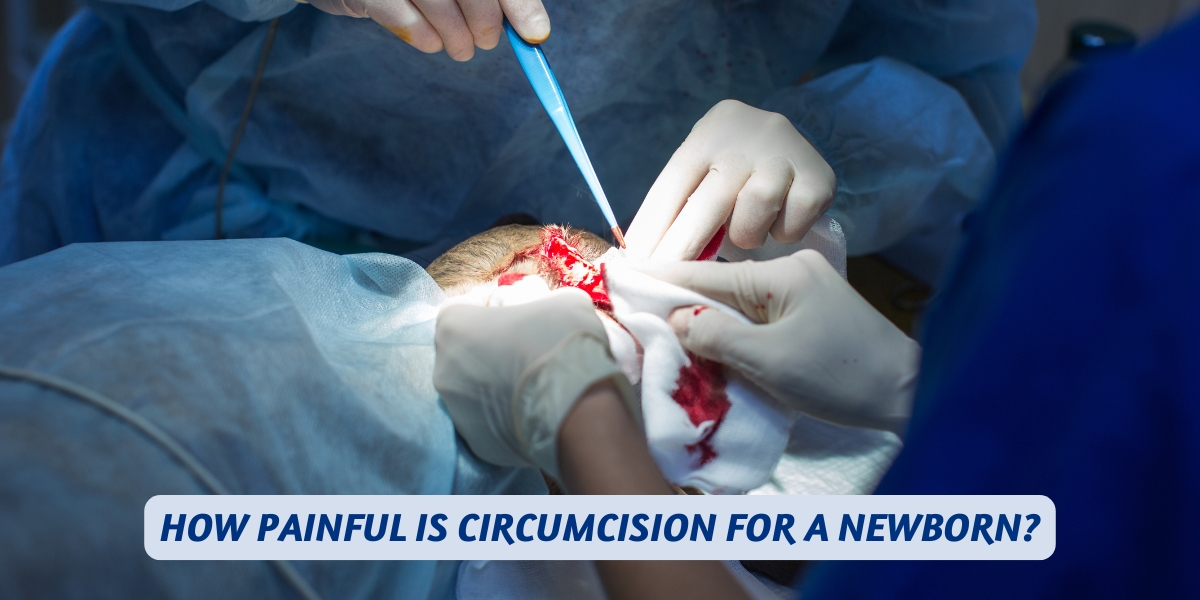Many parents seeking to make informed decisions about their child’s health are interested in circumcision for newborns. While the procedure is common in many cultures and medical practices, it often raises questions about its pain level, the child’s comfort, and long-term implications.
What is Newborn Circumcision?
Newborn circumcision involves the surgical removal of the foreskin, a fold of skin covering the tip of the penis. This procedure is typically performed within the first few days after birth, usually between 1 to 10 days old. It is carried out for various reasons, including religious, cultural, medical, or personal preferences.
The procedure is relatively quick, often taking around 10 to 15 minutes. Despite its brevity, many parents wonder about the level of pain a newborn might experience and the methods employed to manage discomfort.
Understanding Pain Sensation in Newborns
Newborns have a developing nervous system, making them sensitive to pain. While they may not have the cognitive ability to remember pain, they experience it. Pain response in newborns is observed through crying, changes in heart rate, and increased levels of stress hormones such as cortisol.
However, medical advancements have significantly improved pain management strategies during and after circumcision. This ensures that the procedure is as comfortable as possible for the baby.
Must Read – Pediatric Anesthesia: Safety and Myths
Pain Management Techniques During Circumcision
1. Use of Anesthesia
Modern circumcision procedures commonly involve the use of local anesthesia to minimize pain. The two most frequently used methods are:
- Topical Anesthetic Creams: Applied to the skin, these creams help numb the area before the procedure.
- Injectable Anesthetics: A small injection near the base of the penis provides more profound numbing effects.
Studies show that using anesthesia can significantly reduce the baby’s pain response during circumcision, making it a standard practice in many medical facilities.
2. Oral Sucrose Solution
Administering a sucrose solution during the procedure is another effective way to soothe newborns. The sweet taste has been proven to trigger calming responses in babies, reducing their perception of pain.
3. Swaddling and Soothing
Swaddling the baby tightly and using pacifiers can provide additional comfort. These methods work by recreating the snug and secure feeling of the womb, helping to calm the infant.
What to Expect During and After the Procedure
During the Procedure
The baby is usually placed on a padded board to prevent movement and ensure safety. After cleaning the area, the anesthetic is applied, followed by the circumcision itself. Medical tools such as the Gomco clamp, Plastibell device, or Mogen clamp are commonly used to perform the procedure safely and effectively.
Post-Procedure Care
Post-circumcision care is crucial for minimizing discomfort and ensuring proper healing. Parents should follow these guidelines:
- Keep the Area Clean: Use warm water to clean the area gently. Avoid using baby wipes that contain alcohol or fragrances.
- Apply Ointments: Applying petroleum jelly or antibiotic ointment helps prevent irritation and infection.
- Monitor for Signs of Infection: Watch for redness, swelling, or unusual discharge, which could indicate infection. Consult your pediatrician immediately if any of these symptoms occur.
Is Newborn Circumcision Painful?
The level of pain a newborn experiences during circumcision largely depends on the use of pain management techniques. Without anesthesia, the procedure can be distressing for the baby. However, with modern medical practices involving anesthetics, sucrose solutions, and soothing methods, the pain is significantly minimized.
While some discomfort may persist during the healing process, it is generally mild and short-lived. Most babies recover within 7 to 10 days, during which parents can take steps to keep them comfortable.
Benefits of Circumcision
Circumcision is associated with several potential health benefits, including:
- Reduced Risk of Infections: Circumcision lowers the risk of urinary tract infections (UTIs), particularly in the first year of life.
- Improved Hygiene: Without the foreskin, cleaning the genital area is easier, potentially reducing the risk of infections.
- Lower Risk of Certain Diseases: Studies suggest circumcision may lower the risk of sexually transmitted infections (STIs), including HIV, later in life.
- Prevention of Medical Conditions: Circumcision can prevent conditions like phimosis (tight foreskin) and balanitis (inflammation of the foreskin).
Risks and Considerations
Like any surgical procedure, circumcision carries potential risks. These include:
- Bleeding: Minor bleeding is common but usually resolves quickly.
- Infection: Although rare, infections can occur if post-care instructions are not followed.
- Pain and Irritation: Temporary discomfort during healing is normal.
- Adverse Reactions: In rare cases, babies may react to anesthesia or develop complications related to the procedure.
Parents should weigh these risks against the potential benefits and consult with their pediatrician to make an informed decision.
Parental Decision-Making
Deciding whether to circumcise a newborn is a deeply personal choice influenced by cultural, religious, and medical factors. Open communication with healthcare providers is essential to address any concerns or questions. They can provide guidance tailored to your family’s needs and values.
Newborn circumcision is a common and safe procedure when performed under proper medical supervision. While newborns do experience some level of pain, advances in pain management techniques have made the process significantly more comfortable. Understanding the procedure, its benefits, risks, and aftercare can help parents make informed decisions and ensure their child’s well-being.

